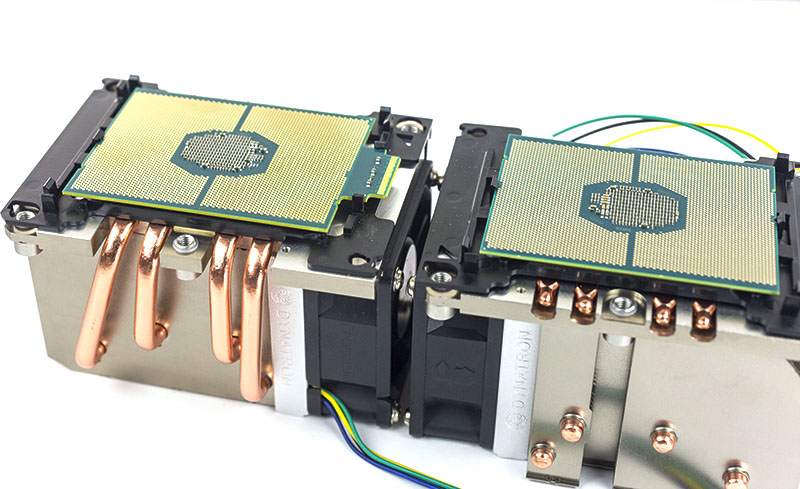your math does not checks out. Let's try this again.
8C/16T P cores get anywhere from 18K to 20K points in CBR23 so a 16P would get from 36K to 40K points and a 24P would get from 54K to 60K now a 8P + 32E will get about 52K. so a 8P + 32E it's more like a 21P.
Raptor Lake 8P + 16E would perform like 16P Alder Lake and a 8P + 32P Meteor Lake CPU would match or beat a Zen3 TR Pro 5975X.
Think you are misunderstanding me. I was saying that in response to comparing 8+32 with 24P. In die area and power they are absolutely NOT comparable. 24P is equal to 8+64. 8+32 will be far smaller and less power than 24P. 8+64 might use similar but perform far higher.
I have not looked at the socket spec or any motherboards to determine whether SPR-HBM is designed to fit every Eagle Stream motherboard or not, but I’m leaning towards the same conclusion as you. If so, it’s an unnecessary complication, probably due to late decision to make HBM parts.
The requirements for HPC are different and the HBM part is likely a spiritual successor to -AP parts. The volume on HBM is far lower* but important. If you are going to put it on a platform that's similar(or even exact) then you want to adjust the smaller volume part to the lower one rather than the other way around. Whatever needed for the HBM part will become a costs adder for the really low end parts that'll go in the same socket.
They justified Cascade Lake-AP based on that it can be physically dense. That chip had lot of pins and were BGA for example. It takes every advantage of AVX512 so it'll have an average power use far higher than regular servers. It makes sense why it has those ears. It's not an afterthought but a simple way of adding HBM.
The HBM part is given way more attention by Intel than volume would suggest. They talk about it since it's the only SPR line that'll have any advantage over Genoa.
SPR HBM is indeed like Cascadelake-AP:
https://www.tomshardware.com/news/sapphire-rapids-with-hbm-pictured
It is also noteworthy the HBM-equipped Sapphire Rapids comes in a large BGA form-factor and will be soldered directly to the motherboard.
So if you go BGA and with 64GB per chip HBM memory if you can reduce system memory requirements(or in some cases eliminate it entirely) then you can further reduce the size of the motherboard.
*When I say the HBM part volume will be low, refer back to Cascade Lake-AP. Nothing but supercomputer stuff. Maybe they'll do little better with Sapphire than they did with Cascade.











